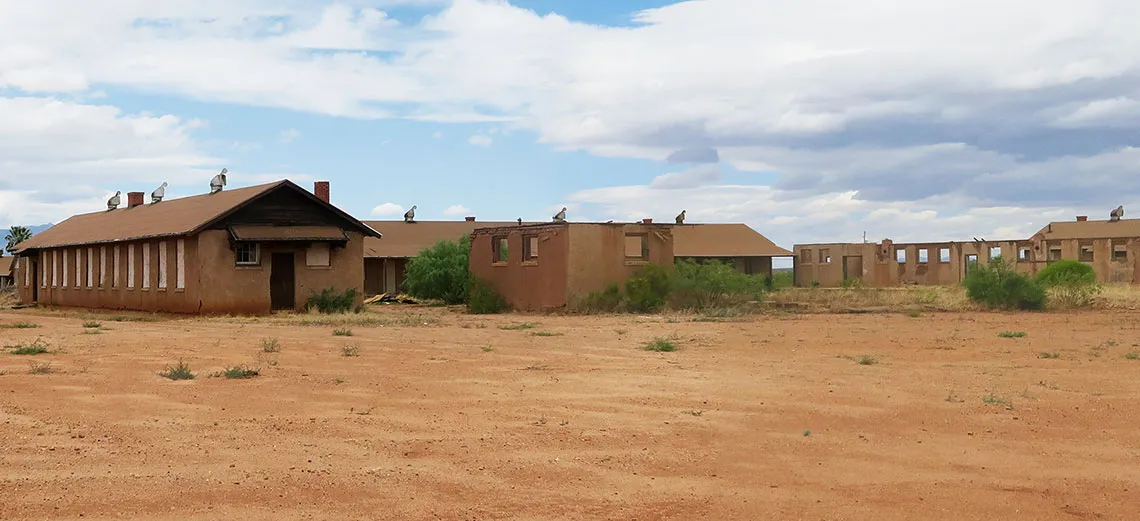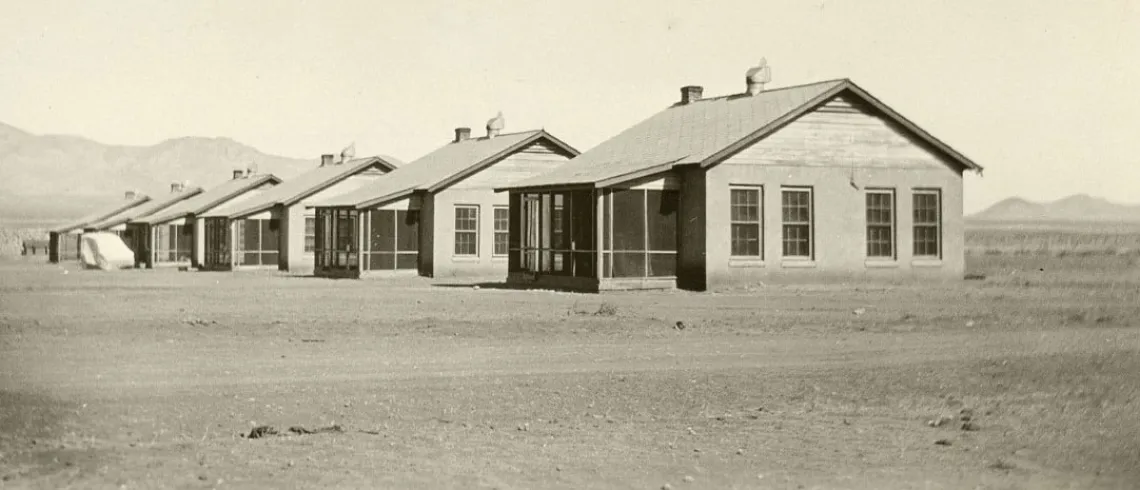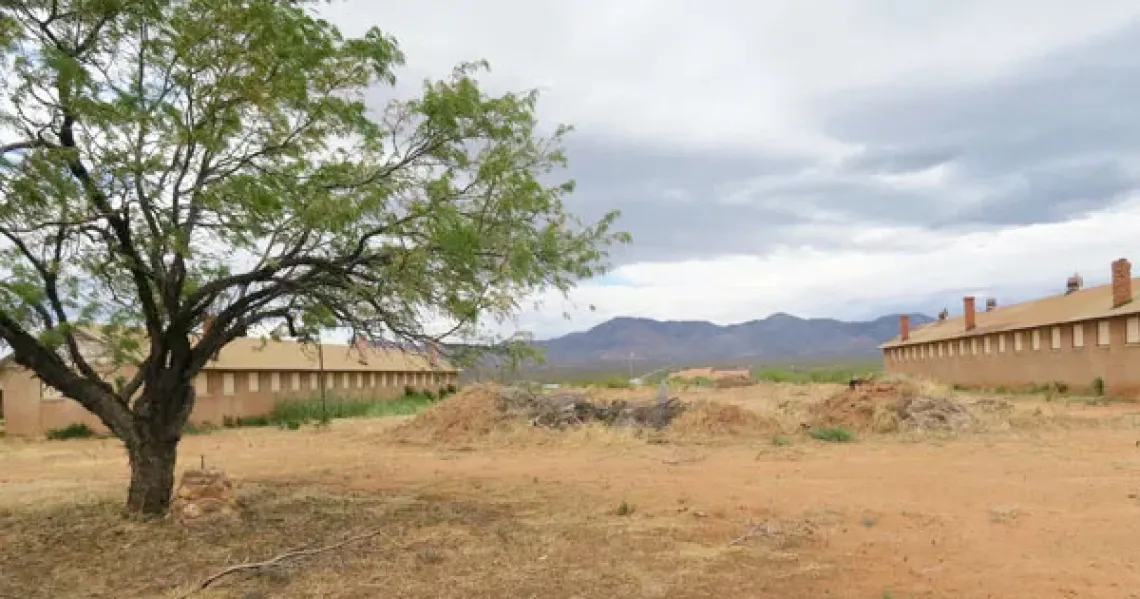Student and Faculty Research Leads to ‘Most Endangered Historic Places’ Designation for Buffalo Soldier Camp

Camp Naco in Southeastern Arizona. Photo by Helen Erickson.
During the Mexican Revolution of 1910-1917, 35 military camps were established along the U.S.- Mexico border, from Brownsville, Texas to Arivaca, Arizona. Tucked between the Huachuca and Mule Mountains of Southeastern Arizona the last surviving historic military establishment: Camp Naco.
Camp Naco’s original adobe structures serve as a historic benchmark of the Buffalo Soldiers and the contributions of Black regiments who served in a segregated Army following the Civil War. After the camp was decommissioned in 1923, however, the site passed through several owners and suffered from vandalism, exposure, erosion and fire.
Thanks to the work of University of Arizona College of Architecture, Planning and Landscape Architecture students and faculty under the Drachman Institute, Camp Naco was just named one of America’s 11 Most Endangered Historic Places by the U.S. National Trust for Historic Preservation.

Historic photo of original Camp Naco adobe structures. Photo courtesy Bisbee Mining and Historical Museum.
This recognition brings higher awareness of the camp's historic significance and, according to Helen Erickson, project director in CAPLA’s Heritage Conservation Program, is expected to expand opportunities for grants and collaboration with organizations to help preserve the camp.
The story of how Camp Naco was selected for the list of endangered historic places starts with the creation of a map… or rather, a story map—an interactive onsite and online tool that provides historic information to visitors both in person and via a website.
In the summer of 2021, Master of Science in Urban Planning student Sarah McDowell completed a Historic American Landscapes Survey for Camp Naco as an intern for Archaeology Southwest. It was accepted in August 2021 by the National Park Service and will soon be available in the Library of Congress.
McDowell’s research led to the fall 2021 submission of a grant application in collaboration with the nonprofit Naco Heritage Alliance to Arizona Humanities. Their goal? Armed with McDowell’s Historic American Landscapes Survey, develop a story map for Camp Naco.

Historic view of Camp Naco from its water tower. Photo courtesy Bisbee Mining and Historical Museum.
Under the direction of Erickson, a team was formed to create the interactive tool. Members include Erickson, Naco Heritage Alliance volunteers, a videographer, an experienced creator of story maps, McDowell and Master of Landscape Architecture student Teresa DeKoker.
McDowell serves as the historian and photo researcher while DeKoker serves as the team’s overall graphic designer and is responsible for everything from the creation of a logo to signage. Both students are also enrolled in UArizona’s Graduate Certificate in Heritage Conservation.
The story map will tell the tale of the camp and its meaning for the descendants of the Buffalo Soldiers and for African-American members of the military and their families. For visitors, it will provide a virtual guide to the site, from camp layout to the people who were stationed there to the camp’s everyday activities.
The story map will launch in June 2022.

Camp Naco, just north of the Mexico border in southeastern Arizona. Photo by Helen Erickson.
“In the process of developing the story map, we have also become part of a broader outreach effort for the Naco Heritage Alliance,” says Erickson. “Bits and pieces of the story map research have led to additional successful grant applications, which have provided close to $30,000 in funding for emergency repairs to the adobe structures.”
With the site’s inclusion on the America’s 11 Most Endangered Historic Places list, the hope is that additional funding opportunities will open up, as well. Erickson assembled and submitted the Camp Naco proposal to the U.S. National Trust for Historic Preservation in fall 2021.
Two years ago, the City of Bisbee acquired Camp Naco and, thanks to efforts by Erickson, the students and others, is working closely with the Naco Heritage Alliance, Southwest Association of Buffalo Soldiers and other Arizona organizations to identify additional critical funding and partnerships. With the collaboration of these organizations, the goal is to restore the historic camp buildings for community and educational uses, heritage tourism and recognition of the critical role of the Buffalo Soldiers in the American Southwest.
“It’s a fantastic historical site that we can’t lose,” concludes Erickson.



